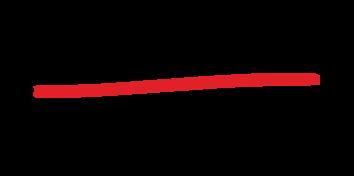PLC things
WHAT DO I DO?








WHAT DO I DO?







2
SOLUTION TREE:
CEO
8
Jeffrey C. Jones
PRESIDENT
12
Edmund M. Ackerman
SOLUTION TREE PRESS: PRESIDENT & PUBLISHER

Douglas M. Rife
18
ART DIRECTOR
Rian Anderson
PAGE DESIGNERS
Laura Cox, Abigail Bowen, Kelsey Hergül, Fabiana Cochran, Julie Csizmadia, Rian Anderson
As someone who did not grow up navigating the complexities of social media, it has been both fascinating and, at times, alarming to observe the ever-evolving influence that it has on us and the development of our relationships. Before the days of social media, we all navigated the development of social skills and relationships through in-person interactions. The pathway to establishing friendships and credibility was in person, and it required thoughtfulness and a commitment to developing and consistently demonstrating characteristics that were aligned to the kind of person you wanted to be known as. In other words, it was how you established a reputation over time. You were publicly declaring what you value and what you believe in by engaging in behaviors that were consistent with those values and beliefs.
What has changed over time is one’s ability to create or establish a relationship or reputation without having to demonstrate, in person, behaviors that are consistently aligned with what one hopes their reputation to be. On social media, one can post photos, quotes, and inspirational messages that are only aligned with who they aspire to be without having to do the challenging work of behaving in an aligned way each and every day.
AllThingsPLC (ISSN 2476-2571 [print], 2476-258X [Online]) is published four times a year by Solution Tree Press.
555 North Morton Street
Bloomington, IN 47404
800.733.6786 (toll free) / 812.336.7700
FAX: 812.336.7790
email: info@SolutionTree.com
SolutionTree.com
POSTMASTER
Send address changes to Solution Tree, 555 North Morton Street, Bloomington, IN, 47404
Copyright © 2022 by Solution Tree Press
Have you ever followed someone on social media who appears to be deeply re ective and inspirational but your personal or day-to-day experience with them suggests otherwise? What you are experiencing is someone’s espoused values not matching their day-today behavior.
In Dare to Lead, Brené Brown (2018) asserts that “living into our values means that we do more than profess our values, we practice them. We walk our talk—we are clear about what we believe and hold important, and we take care that our intentions, words, thoughts, and behaviors align with those beliefs” (p. 186). e continual examination of whether our behaviors are aligned with what we say we believe in is not unique to individuals.
All organizations, including schools and school districts, must also participate in this ongoing re ection. Organizations develop and publicize a mission statement that makes clear to stakeholders
the reason for their existence and what the organization prioritizes. Mission and vision statements articulate what an organization believes in. Schools and districts publicly highlight and celebrate those things that are aligned with what they want their stakeholders to know about them. In schools, these things might be high student achievement, performing and visual arts, athletic accomplishments, or students participating in service projects. Oftentimes, the resources dedicated to these things are very visible as well, such as facilities and social media focus.
A professional learning community is built on the four pillars of mission, vision, values, and goals, and the work is driven by three big ideas: a focus on learning in a collaborative culture with a results orientation. Teams in these schools continually work to answer four critical questions: (1) What do we want all students to know and be able to do? (2) How will we know if they have learned it? (3) How will we respond when some students have not learned? and (4) What will we do when they have already learned it? As schools and teams dig in and commit to a cycle of continuous improvement, they must also examine two core beliefs that drive the work in a school culture where all truly means all.
1. We believe that all students can learn to high levels.
2. We take collective responsibility for the learning of all students.

If unexamined, a lack of commitment to these essential beliefs will likely act as a barrier to ongoing improvement for all. And once schools commit to transparently examining these beliefs, they must also commit to the ongoing examination of whether the day-to-day behaviors of those in the organization are consistent with their espoused beliefs.
In 1977, Edward T. Hall described the culture of any given organization as an iceberg consisting of two distinct components. e external or surface component makes up 10 percent of the culture. ese are explicitly learned and conscious components such as traditions and customs and are very publicly celebrated and therefore more easily impacted or changed. One can typically identify these indicators fairly easily on websites, on the walls of a school, or during a public celebration. Ninety percent of an organization’s culture is made up of those things that lie below the surface, or below the waterline. ese are internal and deeply embedded components, such as assumptions, nonverbal behaviors, and perceptions, that are implicitly learned and unconscious, making them much more di cult to impact or change. ese indicators are more challenging to identify and may be more subtle during a sta meeting or in the teachers’ lounge as members of the school community communicate what they are thinking and feeling through nonverbal body language and the use of vocabulary.
When a teacher or sta member is new to a school community, they immediately begin to learn about the most visible components of the culture. ey receive the employee handbook, perhaps scroll through the school’s website, and attend orientation sessions where the school or district communicates what they most want the new members of their community to know, most of which lives above the waterline. en school begins, employees return, parents attend curriculum nights, and students ood the hallways. is is when anyone new to the school begins to listen and observe the behaviors that live below the waterline and thus learn how “things are done around here.”
As Becky DuFour so powerfully pointed out time and time again, if culture re ects “the way we do things around here,” we face the challenge of making conscious that which typically is unconscious. is can only be done through the unrelenting commitment to examining those indicators that live below the waterline on an ongoing basis. We must ensure that they match the values and beliefs we so publicly espouse by in uencing those things that live below the waterline and forcing them to the surface for transparent re ection and discussion.
If your mission statement declares that you will “do whatever it takes to ensure that all students learn to high levels,” are your policies, practices, and behaviors aligned? Are structures and processes in place that would only exist if every person in your organization was deeply committed to your mission? If you are going to publicly declare what you value or what you believe in, work to ensure that you are exhibiting behaviors that align!
District leaders, school leaders, and teacher leaders, take note of the clear warning issued in Learning by Doing: A Handbook for Professional Learning Communities at Work (DuFour, DuFour, Eaker, Many, & Mattos, 2016): nothing will destroy the credibility of a leader faster than an unwillingness to address an obvious violation of what the organization contends is vital. And so, re ect on where the gaps are in your schools and on your social media posts!
Brown, B. (2018). Dare to lead: Brave work, tough conversations, whole hearts. New York: Random House. DuFour, R., DuFour, R., Eaker, R., Many, T. W., & Mattos, M. (2016). Learning by doing: A handbook for Professional Learning Communities at Work (3rd ed.). Bloomington, IN: Solution Tree Press. Hall, E. T. (1977). Beyond culture. New York: Anchor Books.

 Kyle Palmer
Kyle Palmer
History has shown us that oftentimes parent communities and school communities are at odds or disconnected. This was true prior to the COVID pandemic and even truer now. After two years of slamming the door to our parents and not allowing them into our schools, the need to reengage with our parent community is more important than ever!


I had the wonderful opportunity to serve as principal of Lewis and Clark Elementary in Liberty, Missouri, for 10 years, and for most of those years, I had at least one of my children attending school with me. What an amazing experience that was. In addition to being able to see their smiling faces throughout the day, I also felt a heightened sense of responsibility to do all I could to lead a school that was providing them with the best opportunities to learn and grow. is was true not only for my children but for everyone’s children. It was during this experience of wearing both parent and educator hats that I discovered how crucial it was to unite our parent and school communities to serve our students as one. It was the parents’ school too!
Higher Ed Dive (2019) reports that of the 1,000 primary teachers across the United States who participated in the 2019 State of Parental Engagement survey, 55 percent stated they did not understand the importance of parental involvement in the classroom. In addition, 54 percent believed that education was the teacher’s job, not a collaboration between parents and teachers. It may seem noble that these teachers are owning their professional obligations to ensure students learn, but they are doing so at the expense of understanding the need to involve parents in the journey. In fact, parents can and need to be used as a prized and plentiful resource.



As an educator, I see daily how important it is for schools and families to work together. Whether it was during my time as a teacher, as a principal, or as a human resources director, the lack of connection between teachers and educators was evident. All students deserve what I call a strong parentship.
If you are thinking that parentship is a made-up word, you are correct! I de ne parentship as the state of having a trusting and robust collaboration between parents and educators, with an intentional focus on student growth. In a PLC, a parentship better leverages parents’ in uence on their children’s learning in the collaborative culture by equipping parents with the tools necessary for them to make a positive impact. A parentship is a more speci c way to focus on the dynamic, powerful partnership between parents and educators that is critical to student success. Parentships include a student’s parent, guardian or caregiver, or another adult who is working to help improve the student’s success in school and life.
In 2017, I left Lewis and Clark to serve in a new role as a human resources director. About this time, our youngest child, Kau man, was set to start his journey at Lewis and Clark. Kau man was unlike our older three children. From an early age, Kau man struggled with his language and speech. My wife saw this early on. I was in denial; I refused to see how much Kau man was struggling. My wife helped me see our current reality with Kau man, and we started to take the proper steps to try to get him help. As a teacher and principal for many years, I had sat through a few hundred IEP meetings. It wasn’t until I sat there, at a table with several educators, talking about my son and not someone else’s, that I truly understood the need for a strong parentship at Lewis and Clark Elementary. I had to ask myself, Did I do a good enough job creating a strong parentship in my years as principal?

I truly feel like most schools want to have a strong parentship with their parent community. e challenge is to know exactly how to create a relationship so strong that parents and educators feel like they are on the same page with respect to how best to support students. Following are a few strategies that are sure to help you create your own parentship.
In an e ort to support students and families in making postsecondary decisions and to help ensure your high school graduates are looking at college options, you can organize student panels to provide more vital information to families. As we all know, many students and families struggle with these types of decisions. While the school counseling team can handle nancial aid and admissions questions, with this strategy, families can seek feedback from former students who have recently graduated and had similar experiences. Another strategy to build your parentship is to establish schoolwide norms. Just as those in collaborative teacher teams should establish behavioral norms for interactions within and outside the group, schools should determine norms for parent meetings and schoolwide events. It is always best to be explicit about your expectations of others.
• Meetings between teachers and parents or guardians
• Meetings between the principal and parents or guardians
• Interactions between front-o ce sta and parents or guardians

• Phone conversations between teachers and parents or guardians



• Phone conversations between the principal and parents or guardians
Another great strategy that I nd highly e ective is “Heroes in the Home.” e heroes-in-the-home strategy has two purposes. e rst is to celebrate diversity among students and families, which can lead to further conversations about racial equity. e second is to draw the connection between students and their parents so the former see the latter as positive role models, which will strengthen relationships within the family. Note that grandparents, aunts and uncles, and adult mentors close to the family can be heroes in the home as well. To implement this strategy, teachers will need to designate a wall in the classroom as a parent wall. Students then bring in pictures of their heroes to display on the wall. is strategy will work at any level—

elementary, middle, or high school. In their lesson planning, teachers should include time for students to share throughout the week or month. Do not feel the need to have all students share at one time. It is best to spread out the heroesin-the-home discussions so that they can lead to conversations about racial equity throughout the whole year. To enhance learning for all the students, parents can also visit the classroom during these times.
First impressions are important to making sure each parent feels welcome whenever they enter the school. Parents rst come in contact with the front-o ce sta . To make sure this is a positive rst encounter, develop a front-o ce creed.
It is imperative that the front o ce be a warm, caring, and highly functioning area of your school. One way that parents judge the e ectiveness and impact of your school is by their experiences in the front o ce or on the phone with front-o ce sta . In K12 Insight’s 2019 State of K–12 Customer Experience Report, researchers nd that building

trust is the most important foundation for a successful community relationship. In addition, the report states that an ongoing and systemic approach to building a customerservice culture is what generates trust and, in turn, public con dence.

Because of the critical need for a warm, inviting atmosphere in the front o ce, sta must meet certain standards. Front-o ce sta primarily include administrative assistants, though sometimes other sta work from the front o ce, and behavioral expectations apply across the board. ere is no doubt that operating in this area can be di cult, but the front o ce sets the tone for the building, contributing signi cantly to the culture and climate. Do not underestimate the need for positive, e ective customer service in the front o ce.
e building administration team, or those in charge of districtwide professional development, should carry out the training for front-o ce sta . Don’t forget, treating your front-o ce sta with care allows them to better care for others.
is strategy involves front-o ce sta working together to create their own front-o ce creed, which will guide them in their daily work with the school and parent communities. Try to schedule two or three meetings with front-ofce sta , before school starts if possible, to collaboratively work together to create the creed. e rst step is to make sure everyone knows what the purpose of the creed is and how to create it. e next step is to brainstorm ideas. After you brainstorm ideas, put words to paper and create a rough draft of your o ce creed. Take a week or two to re ect and think about your creed. en meet one nal time to nalize the creed. Finally, create copies of the creed and a product to hang on your wall for all to see.
If you would like to learn about more amazing strategies to help you and your school build your very own parentship, check out my book Parentships in a PLC

DuFour, R., DuFour, R., Eaker, R., Many, T. W., & Mattos, M. (2016). Learning by doing: A handbook for Professional Learning Communities at Work (3rd ed.). Bloomington, IN: Solution Tree Press.

Higher Ed Dive. (2019). Majority of primary school teachers say parents don’t understand the importance of classroom, teacher engagement. Retrieved from https://www.highereddive.com /press-release/20190624-majority-of-primary-school-teachers -say-parents-dont-understand-the-import/.
K12 Insight. (2019). K–12 leaders believe customer service is key to establishing trust, even though schools lack vital training and resources to meet community needs. Retrieved from https://www.k12insight.com/k12-insight-releases-full-2019 -state-of-customer-experience-report/.
Palmer, K. (2022). Parentships in a PLC: Forming and sustaining school-home relationships with families. Bloomington, IN: Solution Tree Press.

1. What is a parentship, and why is it important?

2. What are the di erences between parental involvement and parental engagement?
3. What strategies can your PLC employ to create a successful parentship?

 DR. KYLE PALMER is an author and associate focusing on PLC at Work, RTI at Work, and Priority Schools at Work. Palmer was the award-winning principal of nationally recognized Lewis and Clark Elementary in Liberty, Mo., for 10 years. Kyle also currently serves as a part-time director of human resources for the Center School District of South Kansas City, Mo.
DR. KYLE PALMER is an author and associate focusing on PLC at Work, RTI at Work, and Priority Schools at Work. Palmer was the award-winning principal of nationally recognized Lewis and Clark Elementary in Liberty, Mo., for 10 years. Kyle also currently serves as a part-time director of human resources for the Center School District of South Kansas City, Mo.
As the 2022–23 school year is well underway, it is likely your collaborative team has settled into the systems, practices, and procedures you have established. is is a wonderful time to look at what you have in place and consider areas in which you can improve. Following are some questions your team could discuss.
• Have you established team norms, and do you follow them consistently?
• Do you have a process for determining what you want all students to learn?
• Do you have a consistent approach to determine what students already know?
• Do you have a well-established system of interventions?
• Do you have a plan for students who already know the material?
A high-functioning collaborative team will have consensus around the answers to these questions.
In our experience in working with teachers across the US, we’ve found that the most challenging question for highfunctioning teams is the last one on the list—critical question 4: How can we extend and enrich the learning for students who have demonstrated pro ciency? Teachers share that the di culty lies in nding time within the already busy day, prioritizing students who are pro cient when they have students who are struggling, and simply not knowing what to do. e good news is that these barriers can be overcome.
It could be argued that students who already know the material aren’t a priority for collaborative teams. Generally speaking, even if we don’t do much for these students, they will still be ne and pass the tests we give them. However, meeting the needs of all students is a priority in a PLC. When students who know the material are asked to quietly play along, help tutor other students, or help the teacher by grading papers or performing other such tasks, they are not being challenged. If we are to truly meet the needs of all our students, then we must address critical question 4 and provide learning experiences that challenge those who are pro cient.
e importance of this work cannot be understated; schools and workplaces seek to ensure that everyone belongs and has appropriate opportunities. In the United States, gifted and talented programs have been scrutinized for being geared toward White students, Asian American students, or students from high-income families. All students deserve a formal opportunity to learn and grow in a personalized manner. Imagine the contributions of high-performing students from marginalized communities that we have lost because of the education system we have in place. Providing opportunities for all students is one way to begin to overcome systemtic barriers and promote educational equity for all students (Weichel & Pearce, 2022).
We explore question 4 in depth in When ey Already Know It: How to Extend and Personalize Student Learning in a PLC at Work (Weichel, McCann, & Williams, 2018) and What’s Next?: Monthly Extensions to Challenge Pro cient Students in a PLC at Work (Weichel & Pearce, 2022). e latter resource helps collaborative teams implement a preassessment coupled
with a question 4 strategy for a unit every month of the school year. But this article outlines four steps that your team can take immediately, in your next unit, to address question 4.
ere are a few key considerations to keep in mind as you begin this work. Please understand that the work we are advocating is not tracking. Qualifying for question 4 work isn’t based on the “gifted” education list that comes from the district o ce. Rather, we base quali cation on what students demonstrate in the classroom and on materials per unit. e following table helps di erentiate the two types of practice. When the unit is complete, a new cycle of determining who already knows the material will emerge with the next unit.
Also, it is important to note that much of this work is grounded in personalized learning. Personalized learning is a way to give students voice and choice as they learn the agreedon standards and objectives for a unit of study. When students have choice and are coached to try new, hard, creative, and challenging tasks, everyone wins.
We contend that the personalized learning approach that is best for all students is short-cycle cluster grouping (Hattie, 2008). ese short-cycle cluster groups are based on what students know on a common preassessment and last for individual units of instruction. In some classrooms, students engaging in question 4 activities can look like a standards-based genius hour or a schoolwide enrichment session.
So, what can your team do right away during this school year to begin this work? While there is a great deal of information teams can use and routes a team can take, we have outlined four steps you can follow with your next unit to support question 4 students on a regular basis.
Criteria vary state by state, district by district.
Criteria are based on national norms.
Student is labeled as gifted for the long term.
Criteria are the same for all classrooms in each grade level.
Criteria are based on norms determined at the grade and classroom levels.
Student is considered a question 4 student for the short term based on a common assessment.



Student is labeled as gifted in all subjects.
Student gets extended learning opportunities in fragmented time frames.
Student is considered a question 4 student skill by skill, subject by subject.
Student gets extended learning opportunities when necessary.
Gifted Education Practice Question 4 PracticeAs a team, brainstorm a list of the things you have done over your careers when you have challenged a student outside of normal classroom instruction. Of these strategies, what worked? What didn’t work? What might you suggest your team use? ere are many di erent types of activities to consider— choice boards, alternative assignments, question formulation, badges, gami cation, problem-solving teams, and curriculum compacting, to name a few.
We recommend curriculum compacting as a great strategy to begin question 4 work. A curriculum compact is an agreement between the teacher and the student that includes how the student demonstrated knowledge of the area, the alternative extension activity, and how the grade will be determined. Being clear, transparent, and upfront with students on how this process works is a great step toward implementing question 4 strategies. Curriculum compacting is a tried-and-true resource for question 4 learning (Renzulli & Reis, 2021).
Next, develop an activity that your entire grade level or content area can use to extend learning for the students you deter-
mined were ready for it based on the preassessment. We suggest that you work together on this activity to ensure that it is:

• Connected to the agreed-on learning standards for the unit.
• Manageable and doable for your team to implement.
• Valuable for your students to extend their learning. When we were teaching, the most popular way to challenge question 4 students was to have them create a poster or PowerPoint to show their deep learning. Nowadays, there are so many other great resources to use, particularly with tech-savvy students. Videos, collages, drawings, visuals, infographics, music, podcasts, blogs, online discussions, presentations, and digital portfolios are all ways students can show what they have learned at a deeper level. ( e website https://sites.google.com /westside66.net/tech-to-help-learners-create/icreate provides a how-to for each of these tools.) Share these options with students when completing the following “I already know it” contract.

We sometimes get asked why we don’t just give additional problems or worksheets to question 4 students. In response to this question, we came up with an analogy that we believe is worth sharing.
Aaron Rodgers of the Green Bay Packers is considered one of the top quarterbacks in the National Football League. One skill that he has mastered is an incredible ability to draw the defense o side at the line of scrimmage. Once the defense is o side and the referee throws the ag to indicate a ve-yard penalty is coming, Rodgers gets what is basically a free play as the o ense
can decide if they want to take the outcome of the play or the penalty. If he makes a mistake on the play, the team can simply elect to take the penalty and they advance the ball ve yards down the eld. If Rodgers throws a long pass that becomes a thirty-yard gain or a touchdown, the team gets to use that play.
Question 4 students could use worksheets or additional problems for a ve-yard gain, but we recommend that the team throw the ball deep and go for the big play or touchdown. We want to provide students with an opportunity to think deeply instead of settling for just going through the motions.
We hope these four steps have given you a place to start. e rst time you work to implement these ideas may not be perfect—and that is ne. at is why the quintessential book on the Professional Learning Community at Work process is called Learning by Doing. Try it out for a unit. See how it works. Determine what you could do better next time. en, try it out for another unit. If this work interests and inspires you, we encourage you to dig deeper, learn more strategies, and see speci c K–12 examples in What’s Next?: Monthly Extensions to Challenge Pro cient Students in a PLC at Work (Weichel & Pearce, 2022).
Mark Weichel is the assistant superintendent for teaching and learning at Westside Community Schools in Omaha, Neb. He is a former teacher and building administrator at a Model PLC school.
Steve Pearce is the chief human resources o cer of Batavia Public Schools in Batavia, Ill. He is the former principal of two Model PLC schools: Margaret Mead Junior High and Jane Addams Junior High in Schaumburg, Ill.
Fisher, D., & Frey, N. (2017). at pesky fourth PLC question. Solution Tree Blog Retrieved from www.solutiontree.com/blog/that-pesky-fourth-plc-question/. Hattie, J. (2008). Visible learning: A synthesis of over 800 meta-analyses relating to achievement. London: Routledge.
Renzulli, J., & Reis, S. (2021). Curriculum compacting and instructional di erentiation. In Joseph S. Renzulli & Sally M. Reis (Eds.), e schoolwide enrichment model: A how-to guide for talent development (pp. 249–266). New York: Routledge.
Weichel, M., McCann, B., & Williams, T. (2018). When they already know it: How to extend and personalize student learning in a PLC at Work. Bloomington, IN: Solution Tree Press.
Weichel, M., & Pearce, S. (2022). What’s next?: Monthly extensions to challenge pro cient students in a PLC at Work Bloomington, IN: Solution Tree Press.


What is your team’s current practice for answering critical question 4?
What is curriculum compacting, and how can it help your team answer question 4?
Develop an activity that your entire grade level or content area can use to extend learning for the question 4 students.
® Help

















Empower your teacher teams to elevate their professional practice, meet challenges, and grow together. With the support of these resources, you’ll discover concrete action steps you can take now to improve collaboration and ensure learning for all

A teaching goal focuses on INPUTS the activities or actions the teacher will use during instruction.
A learning goal focuses on OUTCOMES—improving student (learning) results.
In the PLC process, teams pursue SMART goals, which, by the very nature of addressing all points of the acronym, are learning focused. We refer to the teacher inputs as strategies or action steps rather than goals.

e Center for Collaborative Education (2012) de nes performance assessments as “multistep assignments with clear criteria, expectations, and processes that measure how well a student transfers knowledge and applies complex skills to create or rene an original product” (p. vi). It identi es the following ve major steps in building a performance assessment.
1. Design common tasks.
2. Craft clear criteria and a rubric.
3. Administer the performance assessment and score student work.
4. Anchor assessments through exemplary work.
5. Re ne the performance assessment and rubric.
Unit:
Essential outcome: Students will be able to . . .
Competencies:
Leverage standards—
Skills and dispositions—
e following template from Breaking With Tradition (Stack & Vander Els, 2018) will guide you in planning a performance assessment.
Center for Collaborative Education. (2012). Quality performance assessment: A guide for schools and districts. Retrieved from www.ode.state.or.us/wma/teachlearn/testing/resources/qpa _guide_oregon.pdf.
Stack, B. M., & Vander Els, J. G. (2018). Breaking with tradition: e shift to competency-based learning in PLCs at Work Bloomington, IN: Solution Tree Press.
Grade level:
Essential questions to guide learning: Students will know (content) . . . Students will be able to do (skills) . . .

Task summary:
Rubric:
Common performance assessment schedule or approximate time needed:
Resources:
Possible accommodations:
Formative assessment plan:
Plan for intervention and extension (after administration):
Revisions to task (after administration):
Enough is a word I’ve heard, used, and thought of pretty extensively recently, and I know I’m not alone. All across the country, educators and educational leaders have asked so many questions and made so many statements regarding “enough”:
• “Am I doing enough to address the educational gaps of my students?”
• “Am I doing enough to support the needs of my teachers?”
• “What happens if we don’t do enough to meet the state accountability standards?”

• “Are we doing enough to address students’ and sta ’s mental health needs?”
• “Do we have enough safety measures in place to keep our students and sta safe from intruders?”
• “How can I maintain a work-life balance so I can be enough for my family, sta , and students?”
• “What can we do to pay teachers enough?”
• “I’ve done all I can, and it still isn’t enough.”
• “Am I enough?”
After stewing on this, mulling it over, and lying awake at night wondering what other tasks I should take on, it hit me: I am not, nor will I alone ever be, enough. at sounds really depressing, but before you quit reading, really think about what that means. Think about the scope and depth of the work you do. ink about your goals and expectations. Characteristic of the education profession are individuals who have high expectations for themselves, which translates to high expectations for students. Now think about accomplishing
BY KATIE ATKINSall that alone. Some of you are trying alone, and chances are, you have become incredibly frustrated having to take on seemingly impossible tasks as individuals working in silos.
One day, my young son was working on a pretty extensive jigsaw puzzle. He’s a bright kid who enjoys challenging himself and has always liked puzzles, so I was a bit surprised to see the frustration on his face as he told me he wasn’t going to continue the puzzle and wanted to put it back in its box. He said it was too hard and he had had enough. When I asked if he had asked anyone for help, he said no; he’s always been able to figure these out on his own. The puzzle pieces were almost all the same color with very subtle markings; I would have probably been in tears already and abandoned the whole thing. But together (we also had to call in Dad to help), we were able to sort the pieces into piles based on the subtle markings, making it a much more manageable task. And in the end, he regained his love of challenges and now had another tool in his tool kit: collaboration.
Oftentimes the scope and depth of the amazing work we love to do—because we care deeply about students and want to help them actualize successful outcomes— become heavily clouded because there is so much. But that does not mean we are defeated, and many of us are resolute that we will not be deterred because kids must win. We need each other in this work. Never before has it been so necessary for us to surround ourselves with thought partners, collaborators, and inspirational supporters. We need to learn from each other, and we must make and protect space for this to happen.
We are all in different situations in our respective schools and job functions, but the essence of meaningful collaboration remains a constant thread regardless of situation or circumstance. What that collaboration looks like must be intentionally designed by those working together, with a collective commitment toward a common goal and a game plan to keep all members of the team on track and supported.
rough collaboration with others, we can obtain and develop the tools and support we need to be enough. And that’s why I love PLCs.
KATIE ATKINS has served in various administrative and instructional roles in public schools across Texas. She is an avid advocate for high levels of learning for all students and champions literacy development, practices, and processes through a spirit of collaboration. As a supporter of teachers and administrators, she is passionate about empowering educators and communities in attaining successful outcomes for students.